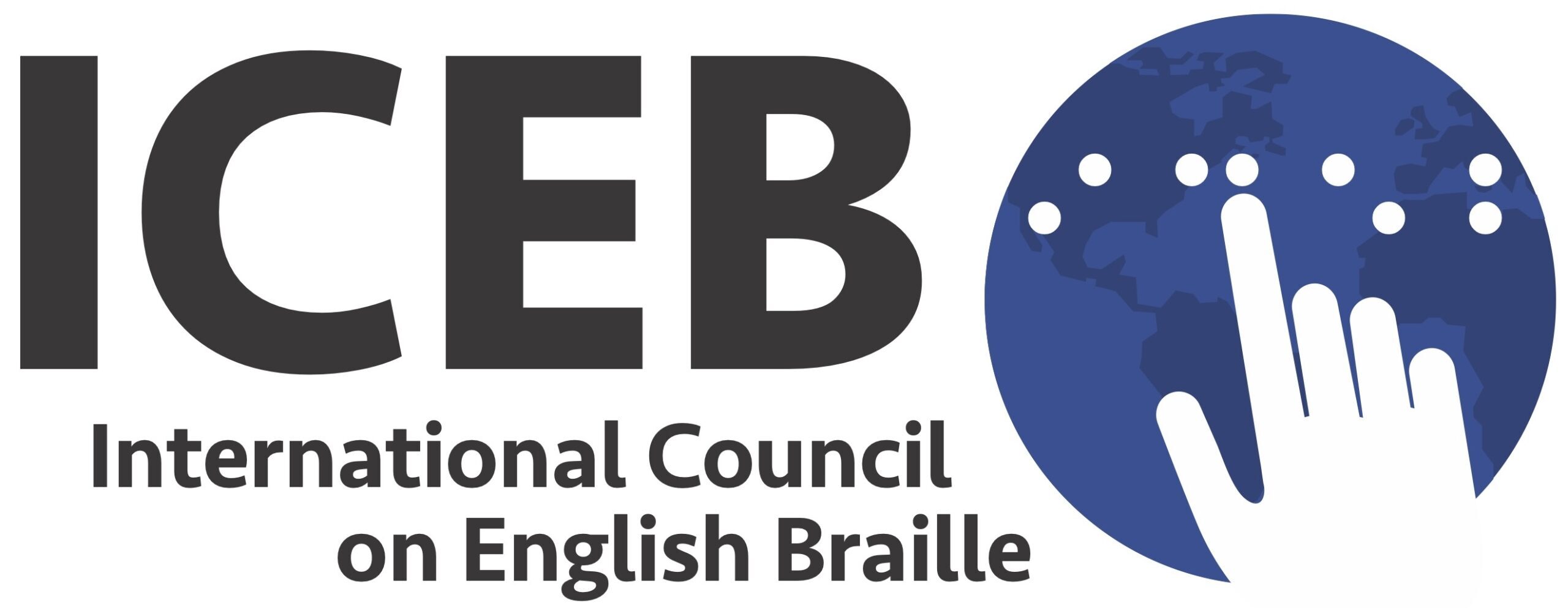UEB Resolution for ICEVI 2006
From Bill Jolley, wjolley@bigpond.com
Seconded by Joe Sullivan, joe@duxsys.com
International Council on English Braille
This Twelfth ICEVI World Conference (Kuala Lumpur 2006)
considering
a) that braille is the bedrock of literacy acquisition for children who are blind and that literacy is fundamental to a good education;
b) that braille is remarkably resilient and flexible in responding to user requirements, with specialist braille codes having been developed for subjects including mathematics, the physical sciences, linguistics and music;
c) that English is widely used as a native, business or further language often co-existing with local indigenous languagesespecially in many developing or least developed countries;
d) that ICEVI estimates that 90 per cent of children who are blind live in developing or least developed countries and that fewer than 10 per cent of these children have access to any formal education,
considering further
a) the vision of the EFACI Global Initiative of ICEVI and the WBU that educational equity for children with visual impairment will be achieved by 2015, reflected in their substantially higher participation rate in formal education through increased enrolment rates and reduced premature drop-out rates;
b) that complexity of the braille code is sometimes a barrier to teachers learning braille and transcribers producing brailleadversely impacting on the opportunities for children who are blind to use braille for everyday learning including mathematics;
c) that globally applicable developments including integrated education of children who are blind; diversity of presentation techniques used in printed textbooks and digitalisation impacting on braille production and usage are placing new demands on braille,
noting
a) the development of Unified English Braille by the International Council on English Braille which decided (Toronto 2004) that the code was sufficiently complete for recognition as an international standard for English-language braille and for consideration by member countries for adoption as their national standard for English-language braille;
b) the adoption of Unified English Braille by Nigeria, South Africa, Australia and New Zealand based on strong support by educators and adult braille readers;
c) the European Union directive that pharmaceutical packaging be labelled in braille and that information on pharmaceutical products be made available in accessible formats, exemplifying the benefits of a unified English-language braille code across Europe;
d) Royal National Institute of the Blind has adopted a policy of support for and transition to Unified English Braille, and will resource the further development of the code in association with other national agencies/authorities, endeavouring to play a leadership role in its promotion,
aware that Unified English Braille
a) harmonises literary and technical codes into a single robust code that faithfully and unambiguously represents the symbols and characteristics of the print original;
b) is optimised for use by students in elementary education whilst meeting the diverse needs of senior students studying mathematics, sciences or languages;
c) may be produced in uncontracted grade 1 or contracted grade 2 braille and is suitable for both beginner and advanced braille users;
d) co-exists with braille codes for other languages used in multilingual environments and through its rich set of symbol assignments may be applied to indigenous languages that use the Roman alphabet and uncontracted braille;
e) is relatively easy to implement in translation software from print to braille or braille to print due to its underlying principles of unambiguity and one to one symbol assignments,
recommends to the ICEVI Executive that it:
1. endorse Unified English Braille as an international standard for English-language braille, highlighting its utility for developing countries and least developed countries where English is widely used;
2. recommend to the ICEVI regional Executives that they each consider the relevance of Unified English Braille and, where deemed appropriate, that they advise the countries in their regions:
a) on the benefits of adopting Unified English Braille:
b) on the importance and logistics of stakeholder consultation prior to considering the question of adoption, with particular attention to education authorities, national governments, donor/service agencies and national organisations of persons who are blind;
c) on the implementation of Unified English Braille once adopted, including strategies to avoid disruption to students using braille and to make available training and reference resources for teachers and transcribers;
3. explore the available means to engage in discussion hosted by the International Council on English Braille to finalise the Unified English Braille specification, to maximise the extent to which Unified English Braille meets the needs of ICEVI stakeholders;especially in developing and least developed countries,
4) promote and seek ways to facilitate where desirable the review of indigenous braille codes using the roman alphabet and uncontracted braille to maximise their consistency with Unified English Braille through the adoption of common braille signs for mathematical symbols, punctuation marks, accent signs and diacritical marks.
encourages ICEVI participants from those developing and least developed countries where English is widely spoken and used in schools:
a) to familiarise themselves with Unified English Braille;
b) to engage stakeholders in discussions concerning the adoption of Unified English Braille as their national standard for braille following consultation with national authorities, education authorities, donor/service agencies and national organisations of persons who are blind.
